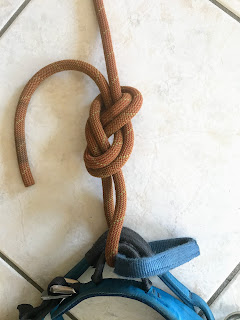A note on climbing culture and geography
We do things differently because climbing is different.
When we meet fellow climbers from other countries, or areas, we are often surprised by the strange methods they use. Sometimes, it is because they have never been taught better. They probably had a mentor who never bothered to learn the ropes himself.
Sometimes, we ascribe it to "culture", as in "well, the Swiss have this ancient alpine culture so they will belay in this weird way".
I think "culture" misses the mark. It is not about eating cheese or wearing leather shorts.
We do things differently because the climbing environment - the rock - demands unique solutions. In some places, you will climb bolted single pitch routes at the foot of a huge mountain. In others, you will climb bold trad and top out on "peak" after 15 meters. Some countries have trees, others do not. Some require miles of trekking, some have road-side crags. Some have soft rock (hence things like five-point anchors), others (like my crag) are granite bedrock covered with giant oak trees.
I write from the perspective of Göteborg. It´s Sweden´s second city, and one of the greatest places to live if you like granite trad, sea kayaking, sailing, and wet winters. Here, the rock is solid, bolts are few, trees abound, and routes are rarely longer than 50 meters. The multi-pitch areas we keep in mind when we teach here are mainly in Norway, usually with solid rock, slabby terrain, and rain (but no glaciers or altitude or bears).
I mention this because this set of conditions will no doubt affect some of the methods and scenarios I will describe. But, hopefully, my local crag approximates any good teaching crag in the world. And, hey, people are people and gravity is pretty uniform.



Comments
Post a Comment